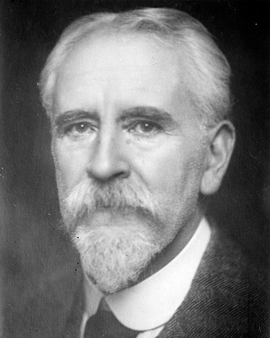A variety of colours and movements that bring stories to life. Frank Dicksee, who achieved fame and prestige in the art scene early on, plays with colours and takes up motifs partly dramatically, but also narratively. Frank Dicksee (full name: Sir Francis Bernard Dicksee) was an English painter and lived in Fritzroy Street. This was known for being a meeting place for creative and free minds. Dicksee was therefore surrounded by art. Not only his environment but also his family had a strong influence on the young Frank. His father was a painter himself and taught him, his brother and sister. Despite school in Bloomybury London, he spent much time in his father's studio. He watched, studied and learned. From time to time he was even allowed to support his father and learned his first steps. After finishing school, he was a full-time employee in his father's workshop until he enrolled at the Royal Academy of Arts. It is considered one of the most important art institutions in Great Britain. He received a silver medal for his outstanding work "The Antique" and shortly afterwards the gold medal of the Academy for his work "Elijah confronts Ahab and Jezebel in Naboth's vineyard".
Many of his works were illustrations. Among others for some magazines, but also illustrations of "Romeo and Juliet" and "Othello". He was an artist who sought the ideal and wanted to capture beauty as a quality in paintings. For his diligence and inexhaustible thirst for knowledge he was knighted in 1925.
Dicksee was a master of his own brush. Every stroke, every color variation was intentional and led to a strong emotion in his paintings. He produced his works in an almost old-masterly manner and closed himself off against the newly emerging currents of modernism. He did not always do what his customers expected from him, but he still managed to surprise and convince them again and again. He represented the older generation of artists and lived with contemporaries like Walter Richard Sickert and Augustus John, who, unlike him, tried new forms of art. Their demands were different from those of Frank Dicksee, yet they were not entirely opposed to him.
×





.jpg)
.jpg)
.jpg)
.jpg)
.jpg)
.jpg)
_-_(MeisterDrucke-1014576).jpg)
_-_(MeisterDrucke-1014576).jpg)
.jpg)
.jpg)
.jpg)
.jpg)
.jpg)
.jpg)
.jpg)
.jpg)
.jpg)
.jpg)
_-_(MeisterDrucke-1324509).jpg)
_-_(MeisterDrucke-1324509).jpg)
.jpg)
.jpg)
 - (MeisterDrucke-207309).jpg)
 - (MeisterDrucke-207309).jpg)
.jpg)
.jpg)
.jpg)
.jpg)
.jpg)
.jpg)
.jpg)
.jpg)
.jpg)
.jpg)
.jpg)
.jpg)
.jpg)
.jpg)
.jpg)
.jpg)
.jpg)
.jpg)
.jpg)
.jpg)
.jpg)
.jpg)
.jpg)
.jpg)
.jpg)
.jpg)
_-_(MeisterDrucke-1651254).jpg)
_-_(MeisterDrucke-1651254).jpg)
_-_(MeisterDrucke-909418).jpg)
_-_(MeisterDrucke-909418).jpg)
.jpg)
.jpg)
.jpg)
.jpg)
.jpg)
.jpg)
.jpg)
.jpg)
_-_(MeisterDrucke-1114025).jpg)
_-_(MeisterDrucke-1114025).jpg)
.jpg)
.jpg)
_-_(MeisterDrucke-1063959).jpg)
_-_(MeisterDrucke-1063959).jpg)
.jpg)
.jpg)
_-_(MeisterDrucke-1063960).jpg)
_-_(MeisterDrucke-1063960).jpg)
_-_(MeisterDrucke-141617).jpg)
_-_(MeisterDrucke-141617).jpg)
.jpg)
.jpg)
.jpg)
.jpg)
.jpg)
.jpg)
.jpg)
.jpg)
_representation_allegorique_de_la_reche_-_(MeisterDrucke-1640029).jpg)
_representation_allegorique_de_la_reche_-_(MeisterDrucke-1640029).jpg)
.jpg)
.jpg)
.jpg)
.jpg)
.jpg)
.jpg)
.jpg)
.jpg)
.jpg)
.jpg)
.jpg)
.jpg)
_-_(MeisterDrucke-1497504).jpg)
_-_(MeisterDrucke-1497504).jpg)
.jpg)
.jpg)
_Deux_femmes_dans_un_interieur_bourgeois_de_lAngleterr_-_(MeisterDrucke-1640030).jpg)
_Deux_femmes_dans_un_interieur_bourgeois_de_lAngleterr_-_(MeisterDrucke-1640030).jpg)
.jpg)
.jpg)
.jpg)
.jpg)
_pub_by_Frost_and_Reed_1903_(mezzo_-_(MeisterDrucke-285242).jpg)
_pub_by_Frost_and_Reed_1903_(mezzo_-_(MeisterDrucke-285242).jpg)
.jpg)
.jpg)
_as_Hermione_in_a_Winters_Tale_(gravure)_-_(MeisterDrucke-142550).jpg)
_as_Hermione_in_a_Winters_Tale_(gravure)_-_(MeisterDrucke-142550).jpg)
_-_(MeisterDrucke-1129125).jpg)
_-_(MeisterDrucke-1129125).jpg)
.jpg)
.jpg)
.jpg)
.jpg)
_-_(MeisterDrucke-1131186).jpg)
_-_(MeisterDrucke-1131186).jpg)
.jpg)
.jpg)
.jpg)
.jpg)
.jpg)
.jpg)
.jpg)
.jpg)
.jpg)
.jpg)
.jpg)
.jpg)
_-_(MeisterDrucke-1466809).jpg)
_-_(MeisterDrucke-1466809).jpg)
.jpg)
.jpg)
.jpg)
.jpg)
_-_(MeisterDrucke-1129637).jpg)
_-_(MeisterDrucke-1129637).jpg)
_-_(MeisterDrucke-1128235).jpg)
_-_(MeisterDrucke-1128235).jpg)
.jpg)
.jpg)
.jpg)
.jpg)
.jpg)
.jpg)
.jpg)
.jpg)
.jpg)
.jpg)
.jpg)
.jpg)
_-_(MeisterDrucke-125558).jpg)
_-_(MeisterDrucke-125558).jpg)
.jpg)
.jpg)
.jpg)
.jpg)
.jpg)
.jpg)
_-_(MeisterDrucke-1650625).jpg)
_-_(MeisterDrucke-1650625).jpg)
_-_(MeisterDrucke-1057003).jpg)
_-_(MeisterDrucke-1057003).jpg)
.jpg)
.jpg)
.jpg)
.jpg)
_Une_petite_fille_essaie_dat_-_(MeisterDrucke-1640031).jpg)
_Une_petite_fille_essaie_dat_-_(MeisterDrucke-1640031).jpg)
.jpg)
.jpg)
_-_(MeisterDrucke-1649682).jpg)
_-_(MeisterDrucke-1649682).jpg)
 - (MeisterDrucke-303128).jpg)
 - (MeisterDrucke-303128).jpg)
.jpg)
.jpg)
.jpg)
.jpg)
_-_(MeisterDrucke-897142).jpg)
_-_(MeisterDrucke-897142).jpg)
_-_(MeisterDrucke-1130147).jpg)
_-_(MeisterDrucke-1130147).jpg)






